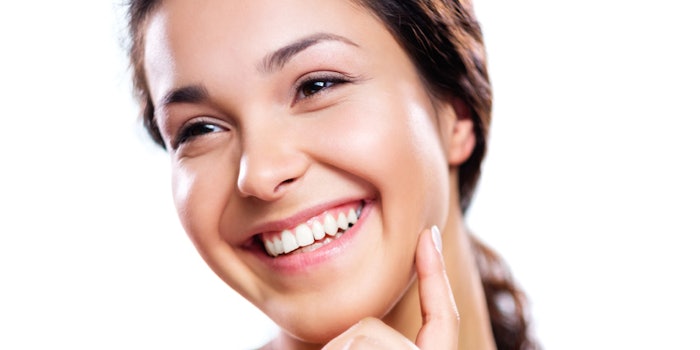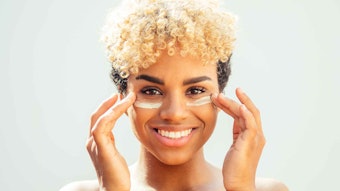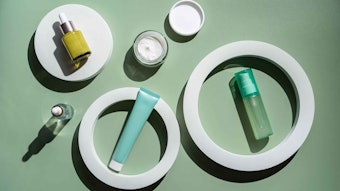
Anti-aging is an ever-present trend in facial skin care. “Looking youthful” and “looking well” for one’s age is a universal desire in the Western world. By treating women’s faces and listening to their life stories, I understand their needs; lifestyle and mindset are an important part of one’s approach to their looks.
Keeping it Fresh
Aging cannot be stopped, however, perceptions of facial aging can be altered by reducing its visible signs. Anti-aging skincare formulations enable women to age well and thus support their self-esteem. I can appreciate first-hand the improvement in quality of life these changes can bring.
Attitudes to aging respond to life pressures and differ across the spectrum of society in Britain. British people are often looking for a quick fix or verge on the other side, “scared of being uncomfortable” and skeptical of skin care product efficacy. Evidence-based anti-aging products, devices and application techniques are the answer for affluent client groups that demand high performance, are interested in well-being and are proactive in promoting their health.
Photo-aging, to which most of the population has been exposed, is associated with characteristic clinical features including a sallow complexion, pigmentation, deep and coarse wrinkles and a loss of elasticity. Anti-aging active ingredients have to modulate the re-modeling of the dermal extracellular matrix to alleviate these clinical signs.
Targeting wrinkles as the most concerning clinical feature is key, and active ingredients should aim to demonstrate the evidence of their clinical efficacy, mechanism of action and synergistic act with complementary ingredients to enhance the clinical outcome.1
More Than Just Product
Nowadays, anti-aging goes beyond the product. Emerging scientific evidence reveals that facial massage may help penetration of active ingredients and alleviate skin sagging. Rubbing increases the flux of actives, reduced skin impedance and increased active ingredient retention.2 Promoting function of lymphatic vessels may prevent accumulation of subcutaneous fat, which causes skin sagging.3
A growing body of research is investigating the science behind facial skin appearance and an individual’s health. Several researchers have examined the effects of skin condition, texture and color distribution on the perception of health, age and attractiveness in human faces. Analysis of these findings leads us to believe that we understand what features age us the most, as recent studies have reported on facial attributes that significantly correlate with age.4
Lifestyle habits i.e. smoking, sunbathing, sunbed use, a low body mass index (BMI), inadequate skin care and sun-sensitive skin types are associated with a higher perceived facial age.5 Diet has been suggested to play a role too; overall skin coloration seems to determine the perception of a healthy appearance, and therefore provides a motivation for a healthy carotenoid-rich diet.6 Internal health seems to impact facial aging; hormonal abnormalities including estrogen and thyroid hormone levels and lower vitamin D levels seem to play a role in pigmentation disorders.7 Increased insulin-like growth factor (IGF-1) level relates to lower perceived age. In contrast, a higher glucose level and higher cortisol level are associated with higher perceived age.8
When judging the effect of anti-aging ingredients in facial aging, the human eye might integrate many other factors prior to making the final judgment. Our face reveals more than we would like to admit and we have always had an ingrained ability to assess how healthy people are, even if we don’t fully understand why. Perhaps instead of going to a general practitioner for a blood test, we will be able to see a snapshot of our internal health in the mirror in the future.
As aging is accelerated in a stressful environment and lifestyles of women around menopause is often stressful, the relaxing element of skin care application might help to enhance their well-being and contribute to the efficacy of the overall anti-aging outcome.
References
1. http://www.ncbi.nlm.nih.gov/pubmed/25616779
2. http://www.ncbi.nlm.nih.gov/pubmed/26177099
3. http://www.cosmeticsdesign-europe.com/Formulation-Science/Shiseido-uncovers-cause-of-sagging-skin-and-suggests-pine-cone-extract-may-be-the-cure
4. http://www.cosmeticsandtoiletries.com/research/methodsprocesses/Skin-Aging-Characteristics-of-Russian-Womenpremium-246879101.html
5. http://www.ncbi.nlm.nih.gov/pubmed/25627783
6. http://www.ncbi.nlm.nih.gov/pubmed/19946602
7. http://www.ncbi.nlm.nih.gov/pubmed/26212394
8. http://www.ncbi.nlm.nih.gov/pubmed/26212394










